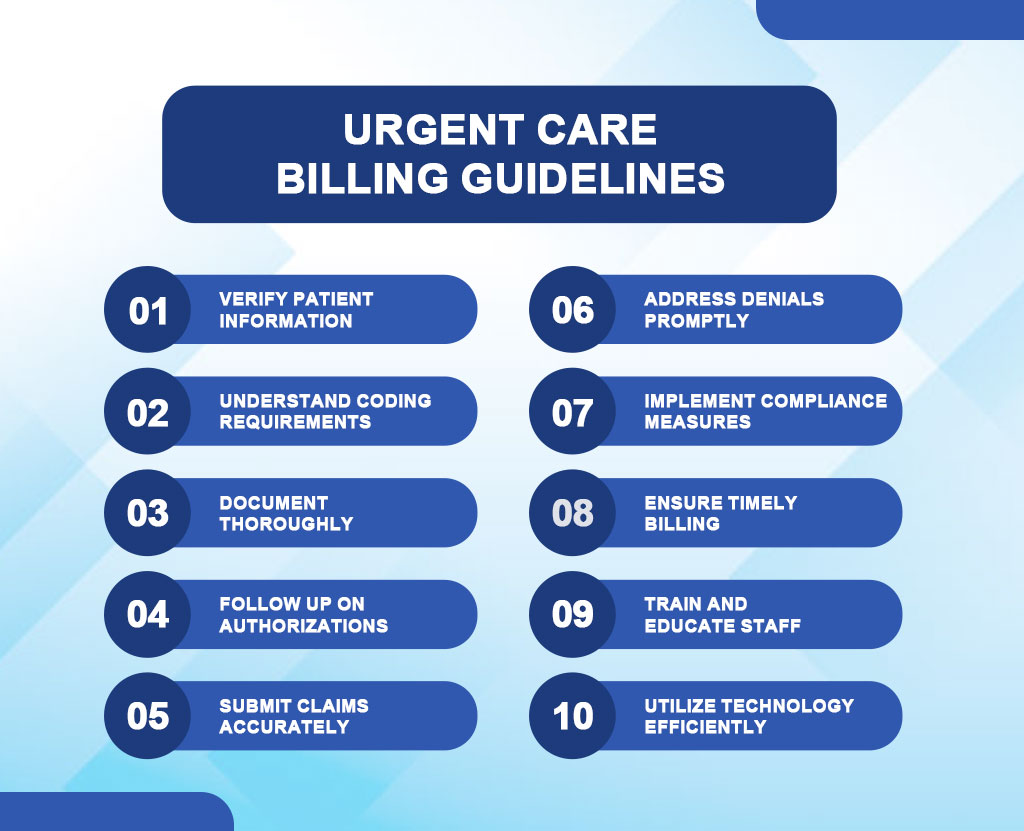Urgent care billing is complicated, whether you’re a patient trying to figure out how much your care costs or a provider trying to make the payment process more accessible. Did you know that the urgent care business has grown by 12% every year over the last five years in the previous five years? More than 9,000 urgent care centers in the U.S. treat millions yearly. Keeping up with the latest urgent care billing guidelines can help to tackle this complex field.
This blog post will take the mystery out of urgent care billing guidelines by explaining how to handle payments, showing you common billing patterns, and giving tips on speeding up the process. Our thorough cheat sheet will help you every step of the way, whether you want to improve the way you bill or just figure out your bill.
The Rise of Urgent Care
From 2007 to 2016, the number of private insurance claim lines for urgent care rose by 1,725%. This rise shows how critical urgent care is in today’s health care. Urgent care centers offer high-quality care in a convenient setting with short wait times.
These centers work quickly and provide a wide range of services; it is essential to understand how they set prices and bill for them so that payments are made correctly, and operations run smoothly.
To keep growing, you must know how to bill and code for immediate care following the latest urgent care billing guidelines.
Urgent Care Billing Guidelines

1. Verify Patient Information
- The patient’s personal and insurance information should always be confirmed before medical billing.
- Ensure you verify with the insurance provider to determine the eligibility and whether or not you are covered.
2. Understand Coding Requirements
- Ensure that E&M services are documented using the correct CPT codes ( Example: 99203, 99204, 99205, etc), as well as diagnostic codes.
- Use the knowledge base of ICD-10 codes for urgent care (Including codes of injury/illness/chronic disease).
3. Document Thoroughly
- Document patient encounters, care, and other services for patients widely.
- Be able to write how long it took to develop the codes and what type of care was provided.
4. Follow Up on Authorizations
- Get all the necessary pre-authorization approvals in cases where the patient’s insurance plan demands.
- All the authorization numbers and communication details have to be documented.
5. Submit Claims Accurately
- Ensure all the contents of the forms are correctly filled out, and all the necessary details are provided.
- Ensure that the codes used correspond with the services and records offered.
6. Address Denials Promptly
- Examine and specify the reasons for the denial and all the defects that might be there.
- Claims are resubmitted with corrections and supporting or supplementary documentation. when necessary
7. Implement Compliance Measures
- The state must respect the payer’s guidelines and billing laws.
- Always ensure that the billing practices follow the new set of rules, an act that requires frequent revisiting.
8. Ensure Timely Billing
- Submit claims within the payer’s required timeframe to avoid delays or denials.
- Monitor claim status and follow up on unpaid or pending claims.
9. Train and Educate Staff
- Provide ongoing training for billing staff on coding updates, billing procedures, and compliance.
- Ensure staff is knowledgeable about payer requirements and urgent care billing practices.
10. Utilize Technology Efficiently
- Leverage electronic health records (EHR) and billing software to streamline billing processes.
- Ensure integration between clinical documentation and billing systems to minimize errors.
11. Maintain Confidentiality
- Protect patient information and billing details by HIPAA regulations.
- Securely handle and store all patient and billing records.
Guidelines for Billing Different Types of Services
When billing for E/M services, it’s essential to select the appropriate CPT code based on the complexity of the visit and the time spent with the patient. The level of service is determined by factors such as history, examination, and medical decision-making. Following the urgent care billing guidelines ensures that you accurately capture the details.
Services such as X-rays, lab tests, and other diagnostic procedures should be billed separately from E/M services. Use the appropriate CPT codes for these procedures and ensure the documentation supports the injections or infusions administered; use specific CPT codes that describe the type of injection or infusion and the substances used.
Urgent Care Billing Cheat Sheet
- A list of frequently used CPT and ICD-10 codes specific to urgent care settings. This helps ensure that the correct codes are used quickly and efficiently.
- Critical billing practices and tips tailored to urgent care, including guidelines for bundling, unbundling, and using modifiers.
- Information on different payer requirements and any specific rules or documentation needed for various insurance companies.
Payment Plans in Urgent Care
Urgent care centers help people not in danger of dying to get emergency medical care. Billing and payment are critical to the operation of an urgent care center. Payment plans can make patients happier and help the facility’s funds.
Patients and urgent care centers both gain from different ways to pay. Patients, especially those who get medical bills out of the blue, can afford care with the help of payment plans. This method lowers costs and makes patients more loyal.
Payment plans help urgent care centers get more cash flow by lowering late payments and bad debt. By giving patients more payment options, facilities can make more money and reduce collection costs.
Wrap-Up!
Patients and providers must understand urgent care billing to negotiate healthcare fees. Understanding urgent care billing guidelines, payment choices, insurance, and bills will enhance your preferences and save money. These ideas improve the handling of finances and healthcare since they help understand or change bills as a patient or as a doctor practicing the bills.
Make sure you look at the billing methods to understand whether including payment options would benefit your company. There is a billing cheat sheet that you can follow, or you can consult professional billing companies such as Resilient MBS. Staying updated with the latest billing guidelines can make your urgent care center efficient and provide exemplary patient service.
FAQS
Yes, it costs a lot for immediate care if you don’t have insurance, as you follow the urgent care billing guidelines.
Emergency room bills can range from hundreds to thousands of dollars depending on how bad the injury is and what care is needed. For people without insurance.
Yes, you can often negotiate urgent care bills without insurance. Contact the billing department to discuss possible discounts or payment plans.
After insurance pays, you may get a bill for co-pays, deductibles, and services that aren’t covered.
To dispute a charge on your urgent care bill, contact the billing department directly, review the charges in detail, and provide any necessary documentation to support your case.










